
Discover Berlin after your German course
Places of interest in the immediate vicinity of our language schools
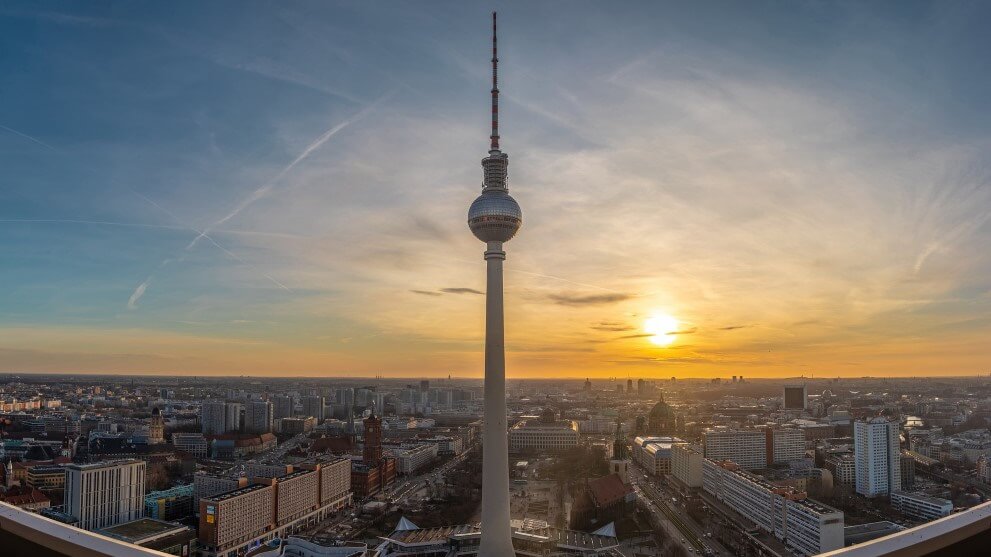
Berliner Fernsehturm
One of the sights not to be missed is the Berlin TV Tower. At around 368 metres, it is currently the tallest building in Germany and a popular excursion destination. Around 1.2 million visitors enjoy the marvellous view every year.
Due to the high number of visitors, tickets should definitely be booked in advance. The lift takes you up to just over 200 metres in a rapid 38 seconds - this is where the viewing platform with panoramic views is located.
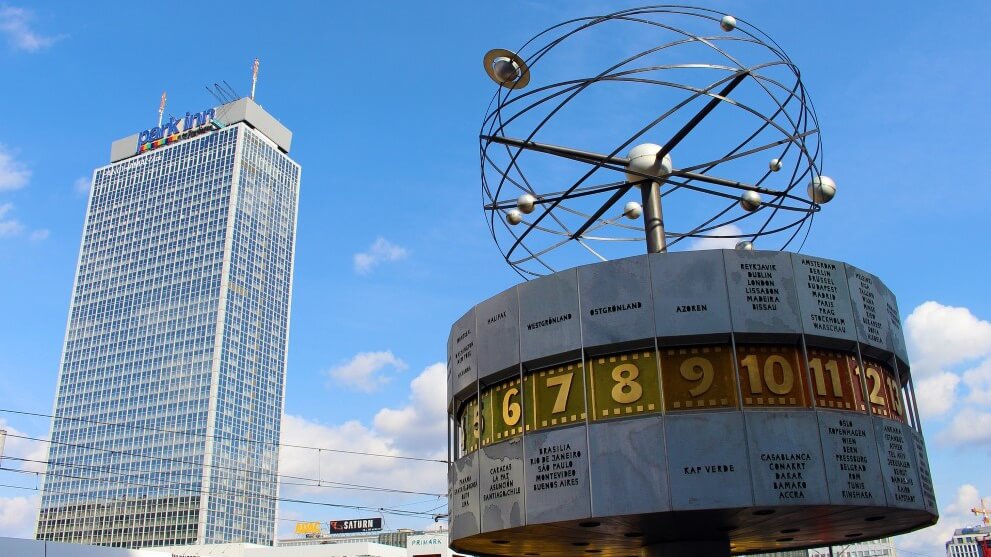
Weltzeituhr
The Urania World Time Clock has adorned Alexanderplatz for decades and is a popular meeting place. As early as 1966, an old Urania column, a kind of street clock with a weather station, was found during excavation work. In 1969, the 16-tonne, 10-metre-high world clock was ceremoniously handed over to the public.
The result is a pillar on which sits an enamelled cylinder consisting of 24 segments and showing the times of important cities around the world. Above this cylinder is a symbolic representation of the solar system.
Brunnen der Völkerfreundschaft
The Fountain of Friendship between Nations is a popular meeting place on Alexanderplatz. It consists of 17 bowls that spiral downwards. Small fountains rise from each bowl, from which the water slowly trickles into the decorated water basin below.
The Fountain of Friendship between Nations has a total diameter of 23 metres and is 6.20 metres high. The underwater lighting is particularly beautiful and makes it a real eye-catcher at night.
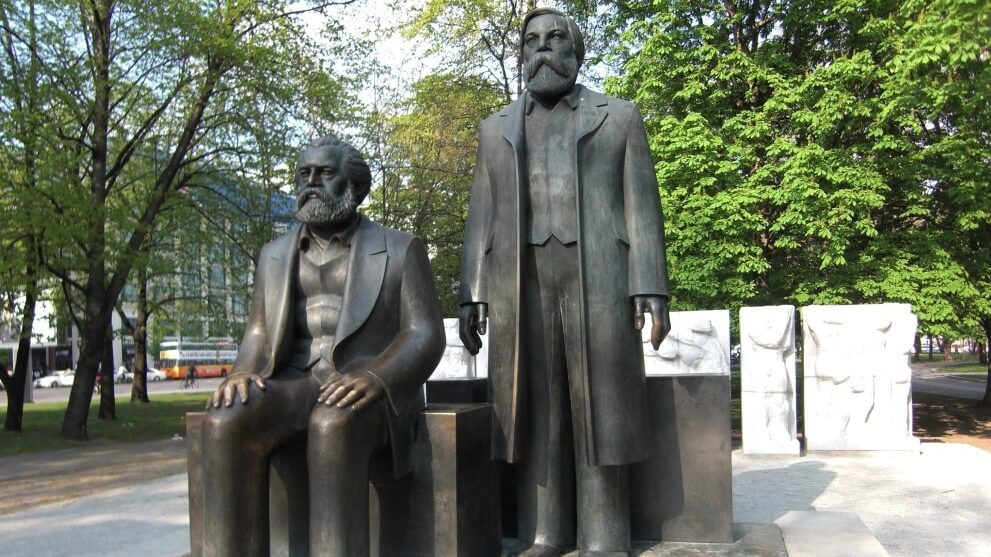
Marx and Engels statues
The Marx-Engels Forum consists of two bronze sculptures of the two philosophers of the same name and probably the best-known representatives of communism. Karl Marx can be seen sitting on a square block. To his left is Friedrich Engels, who can be admired at a larger-than-life size of 3.85 metres.
The Marx-Engels-Forum has stood on Spandauer Straße, very close to the Rotes Rathaus on Alexanderplatz, since 1980.
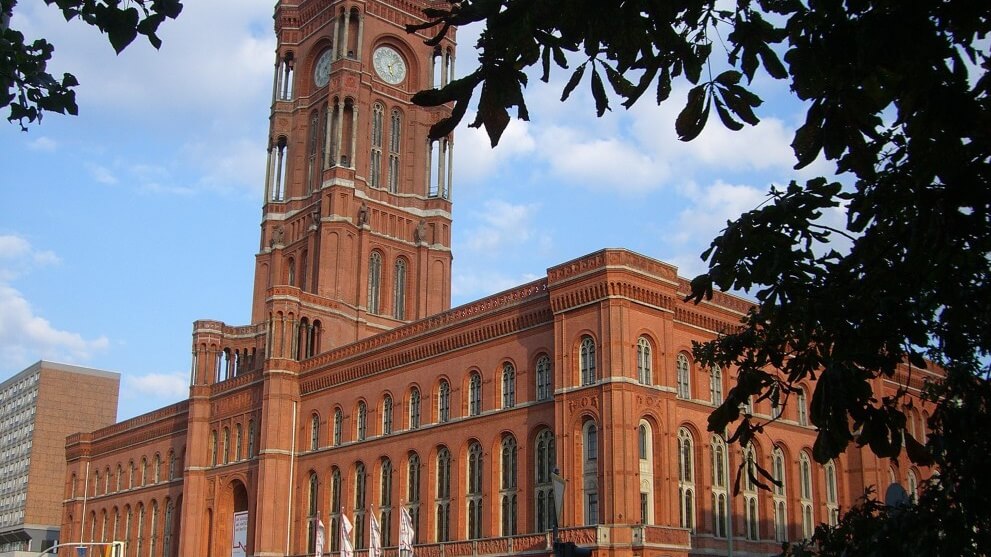
Rotes Rathaus
The Red City Hall was built between 1861 and 1869 and owes its name to its colour. The Renaissance-style building is one of Berlin's landmarks.
Today it is the seat of the Mayor of Berlin and the Berlin Senate. Visitors can tour the Rotes Rathaus from Monday to Friday between 8 am and 10 pm.
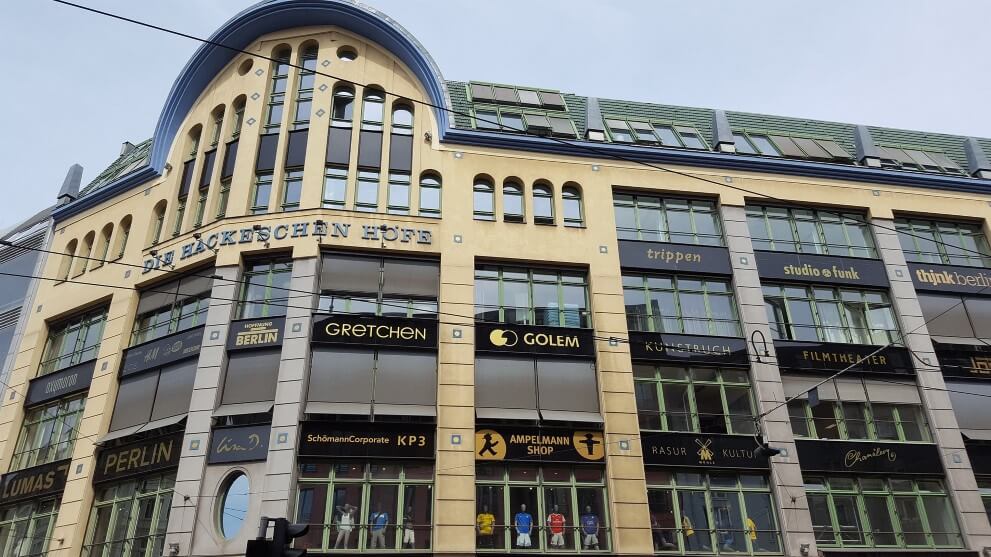
Hackesche Höfe
The Hackesche Höfe in Berlin Mitte consist of a total of 8 individual courtyards that are connected to each other. This makes them the largest courtyard area in the whole of Germany. What looks unspectacular from the outside amazes visitors when they enter.
There are numerous restaurants, clubs, bars, shops and galleries here: a meeting place for people of all nationalities.
The Berlin Wall - 20 minutes from our language schools
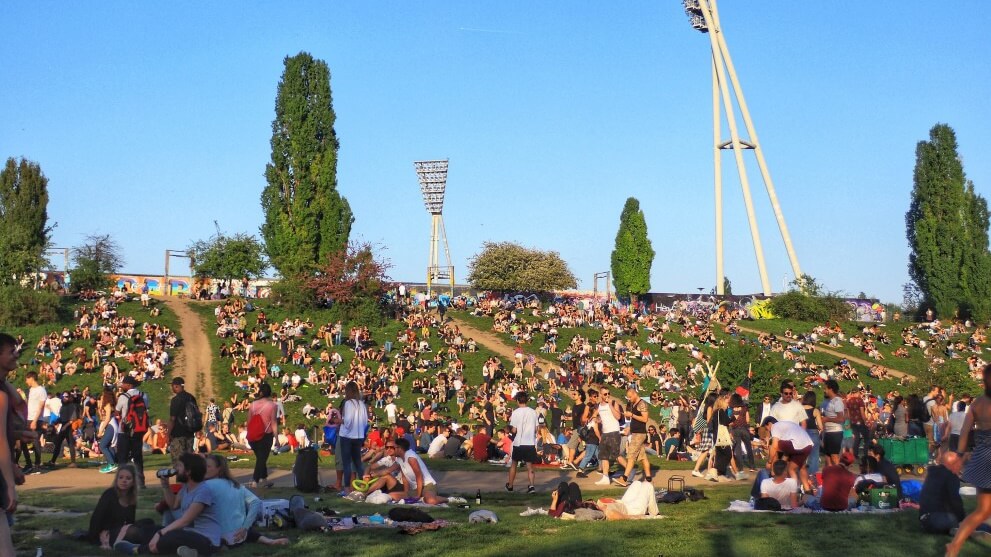
Mauerpark
Where the Wall once divided the districts of Wedding and Prenzlauer Berg, you can now visit Mauerpark. The recreational area along the former death strip is a focal point for sportsmen, jugglers and amateur musicians. People celebrate barbecues and visit flea markets here. A place made for language students - typically German and yet full of cultural diversity.
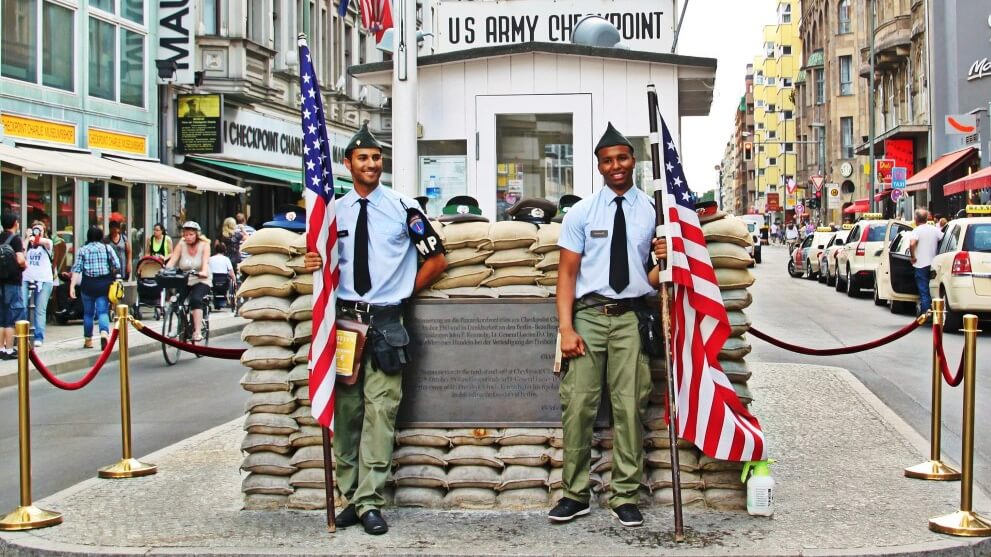
Checkpoint Charly
Checkpoint Charly was the most famous Berlin border crossing. Only ambassadors and the GDR leadership were allowed to pass through it. Spectacular escape scenes took place at the crossing in the city centre.
An open-air gallery documents escape attempts and explains the function of the border fortifications. If you would like to find out more about the inner-German division, you should also visit the Wall Museum in the House at Checkpoint Charlie.
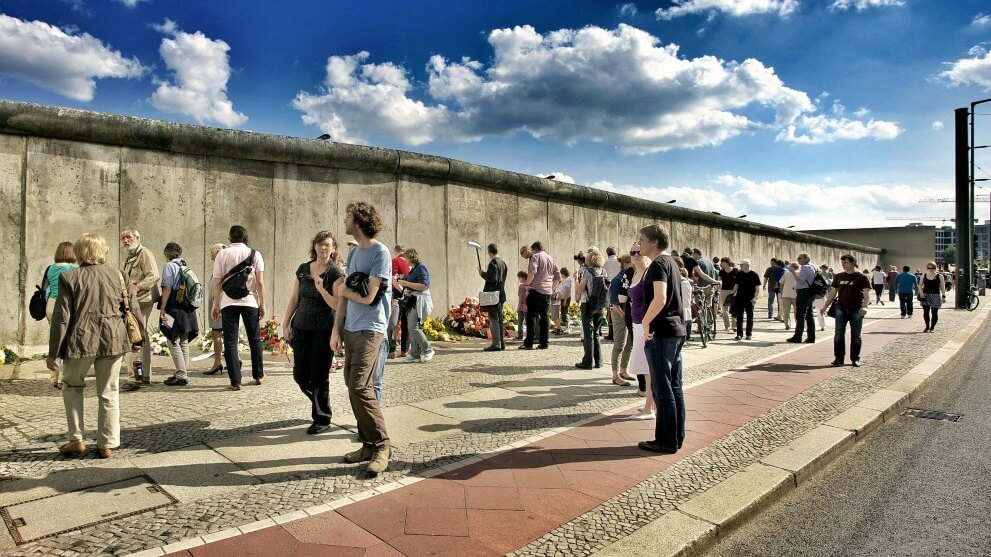
Bernauer Straße
Not far from our language schools is Bernauer Strasse, once a focal point between East and West. The facades belonged to East Berlin, while the pavements in front of it already belonged to West Berlin. The Berlin Wall Memorial was established as a central place of remembrance and has existed since 1999.
Of particular interest is the visitor archive, where you can browse through film and audio material. From the viewing platform, you can see the remains of the former border fortifications.
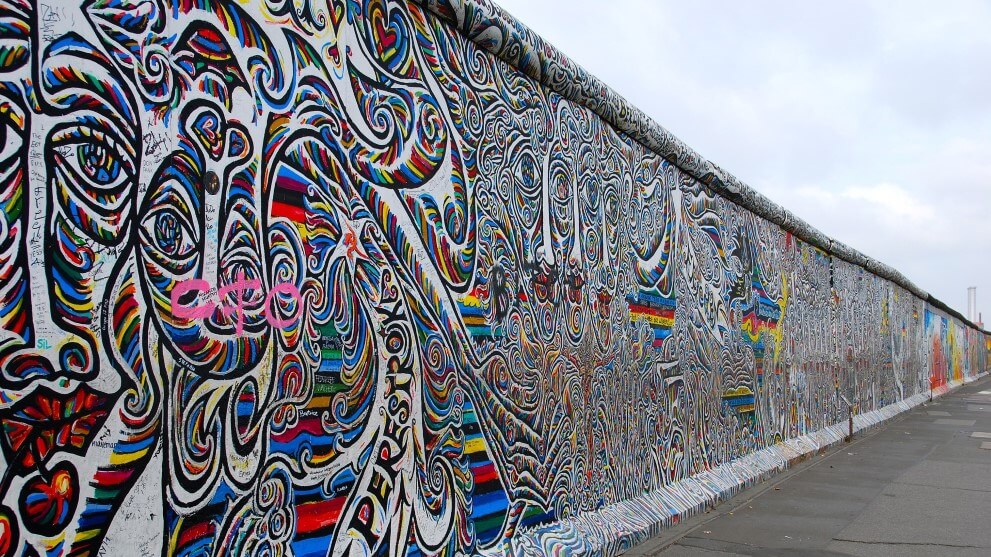
Longest open-air gallery
Berlin's most whimsical gallery can even be visited in your own car. Here you can experience that you can not only be creative with a paintbrush and spray can, but also make a statement.
More than one hundred international artists have expressed their views on German reunification on a one-kilometre section of the Berlin Wall. The longest open-air gallery in the world is a listed monument and a must-see for any visit to Berlin.
Stasi-Museum
The Stasi Museum opens its doors at the Normannenstraße Memorial Centre. Take a look at the working rooms of the last GDR Minister for State Security, Erich Mielke, and gain an insight into the workings of the GDR's political system.
The former State Security prison can be visited in Berlin-Hohenschönhausen. The guided tour of the facility is a particularly authentic experience, as former prisoners provide insights into the 200 cells and interrogation rooms. Language students listen intently to the stories of the people who were once considered political prisoners.
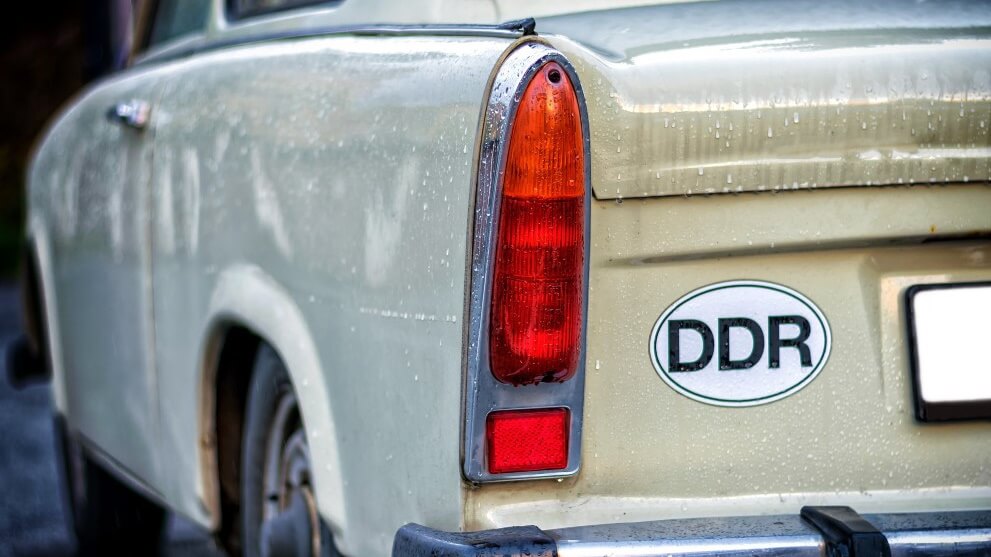
DDR-Museum
You can experience a piece of East German nostalgia on a trip to the GDR Museum. You can also travel back in time by chugging through the streets of Berlin in a brightly coloured Trabant.
Anyone who has studied the history of Berlin will no longer be unfamiliar with many of the terms used in class and will also understand the country and its people better if they take a closer look at historical topics.
Up to 30 minutes away from our language schools
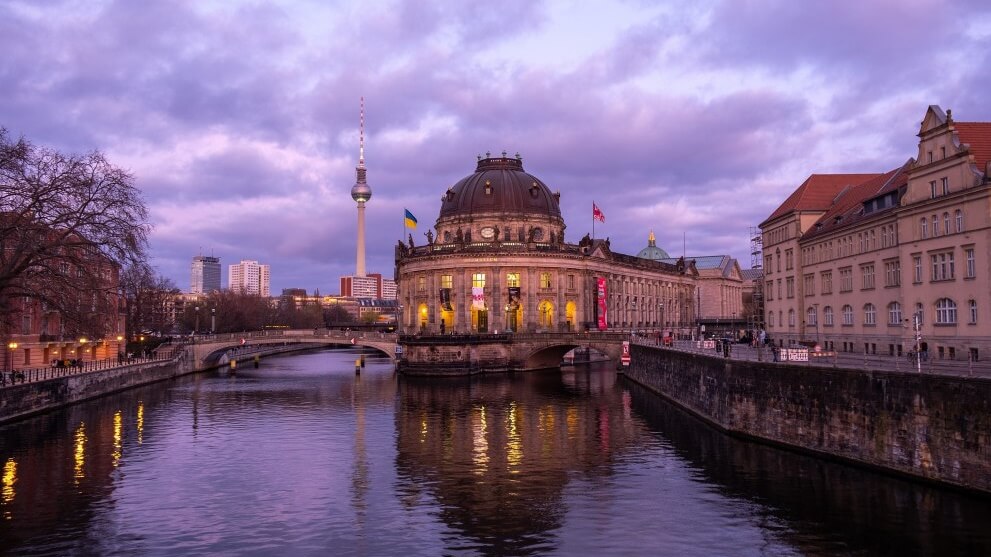
Die Museumsinsel – Tour XXL
If you can't get enough of visiting museums, the Museum Island is the place to be. The Spree Island is home to some of Berlin's most important museums.
These include the Neues Museum, the Altes Museum, the Pergamon Museum, the Bode Museum and the Alte Nationalgalerie.
Ideal for anyone who is interested in culture and wants to improve their German at the same time.
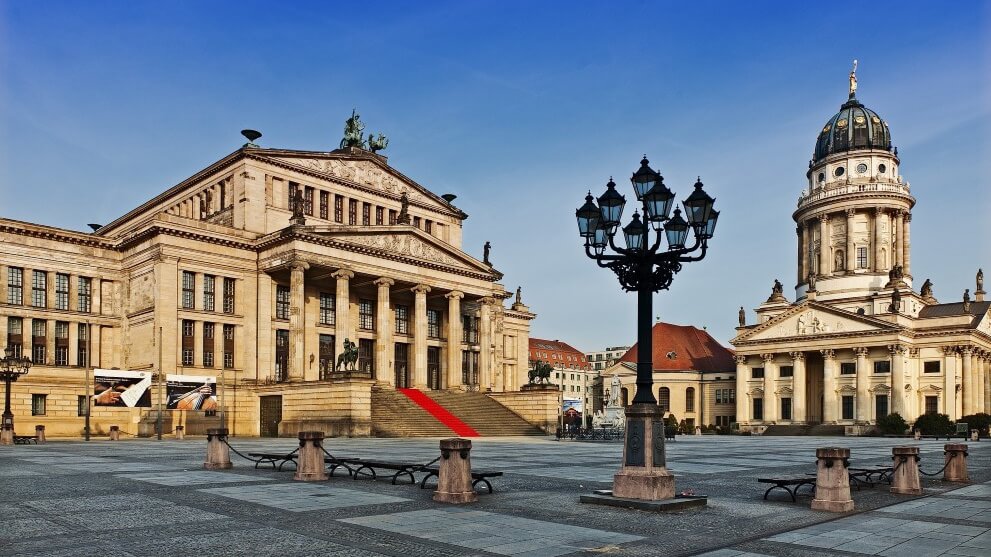
Gendarmenmarkt
Gendarmenmarkt is considered one of the most beautiful squares in Berlin. The Konzerthaus concert hall and the German and French cathedrals dominate the square, which covers over 3 hectares. The historic Schiller monument stands in the centre of Gendarmenmarkt.
Three dates a year make the Gendarmenmarkt an additional attraction: the "Classic Open Air" concert in summer, the "Unity Festival" in autumn to celebrate German reunification and the large "Christmas Market at the Gendarmenmarkt" in winter.

Unter den Linden
"Unter den Linden" is one of the most important streets in Berlin. It stretches around 1.5 kilometres from the Schlossbrücke bridge to directly in front of the Brandenburg Gate.
The boulevard owes its name to its splendid border of lime trees, which stand along the road and overgrow it picturesquely, especially in summer.
Many important buildings and institutions can be found at the address "Unter den Linden": The Madame Tussauds wax museum, universities and embassies of various countries are all located here.
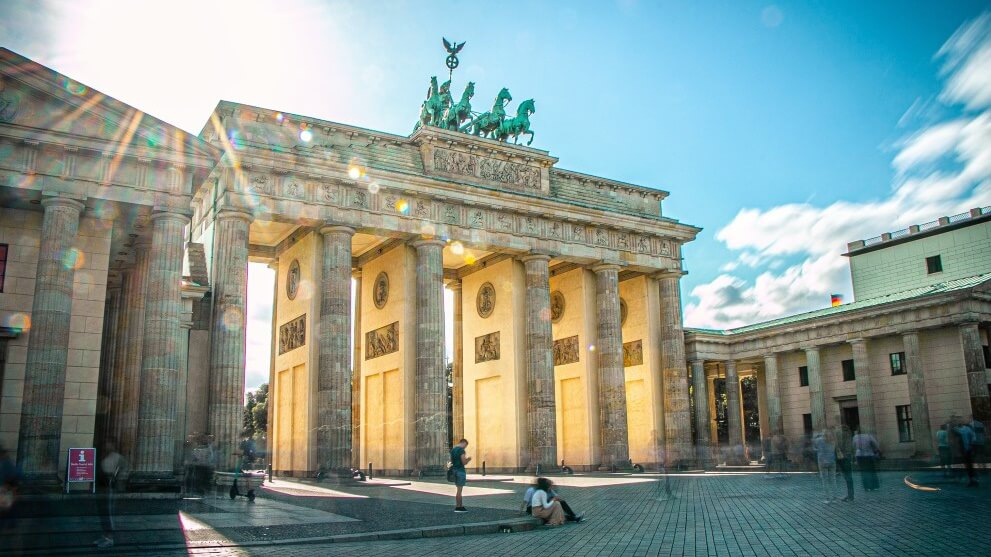
Brandenburger Tor
The Brandenburg Gate in the Berlin-Mitte district is the crowning glory of the boulevard "Unter den Linden". The then king ordered the construction of the Brandenburg Gate back in 1788.
After the destruction caused by the Second World War, the Brandenburg Gate was painstakingly restored and later, during the division of Berlin, became the border marker between West Berlin and East Berlin. Today it is the landmark par excellence in Berlin.
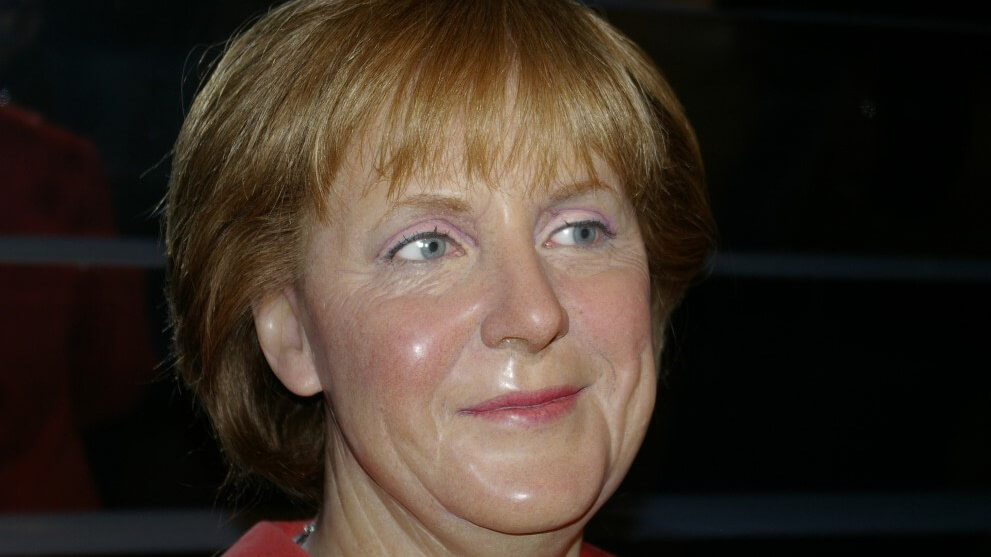
Madame Tussauds
At Madame Tussauds, you can see Hollywood stars, politicians and historical figures in life-size - most of them the spitting image of their faces.
In Berlin, former German Chancellor Angela Merkel and Governing Mayor Klaus Wowereit have of course also immortalised themselves in wax. The exhibition is open 364 days a year. The only exception is Christmas Eve.
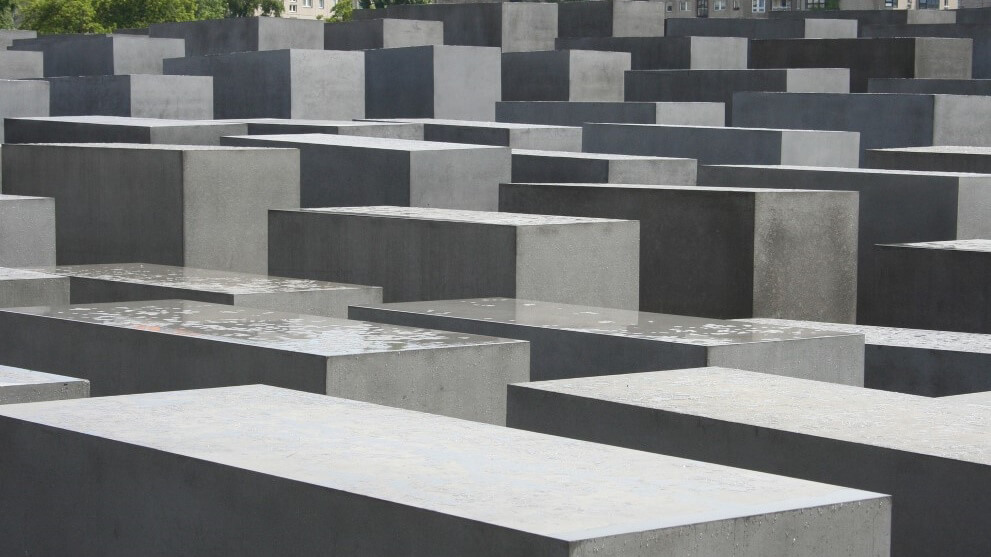
Stelenfeld
The "Memorial to the Murdered Jews of Europe" covers an area of 19,000 square metres.
Simple and yet effective due to its size alone: the Holocaust memorial consists of 2,711 concrete pillars arranged at right angles on the undulating base.
The field of stelae is freely accessible to visitors from all sides. As soon as it gets dark, lighting shines between the stelae, which are up to 4 metres high, to show visitors the way.
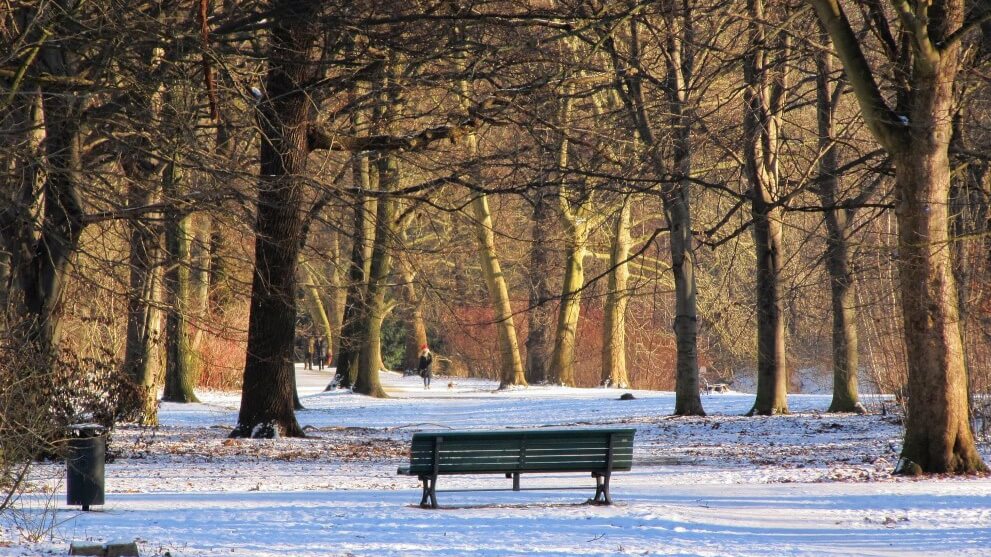
Tiergarten
Tiergarten is not only one of Berlin's 12 districts, but also refers to the "Großer Tierpark". This is a large, green park in the centre of the city.
With an area of around 2.1 km², the Tierpark is an idyllic oasis in the middle of the turbulent city of Berlin. Especially in summer, it is one of the most popular meeting places for sports, walks or relaxing in the sun.
In addition to the green spaces, the English Garden, numerous memorials and monuments and the Victory Column are also inviting.
Over 30 minutes away from our language schools
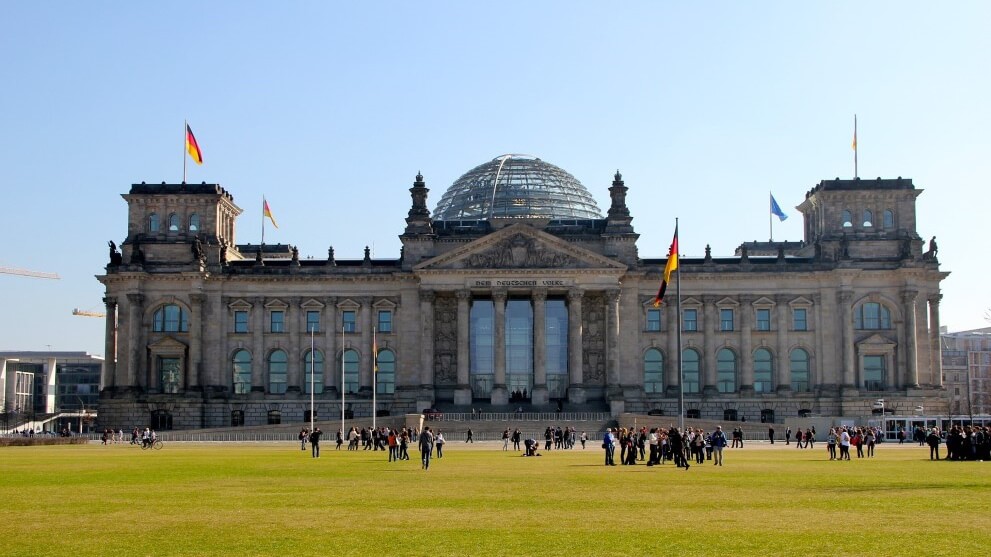
Reichstag
The Reichstag on Platz der Republik in Berlin Mitte has been the seat of the German Bundestag since 1999. If you would like to visit the Reichstag after the German course, you should definitely register in advance.
From the viewing platform around the large glass dome, you have a view of the TV tower, the Rotes Rathaus and the Brandenburg Gate. If you arrive at the right time, you may even be able to watch a meeting of the members of parliament in the so-called plenary chamber.
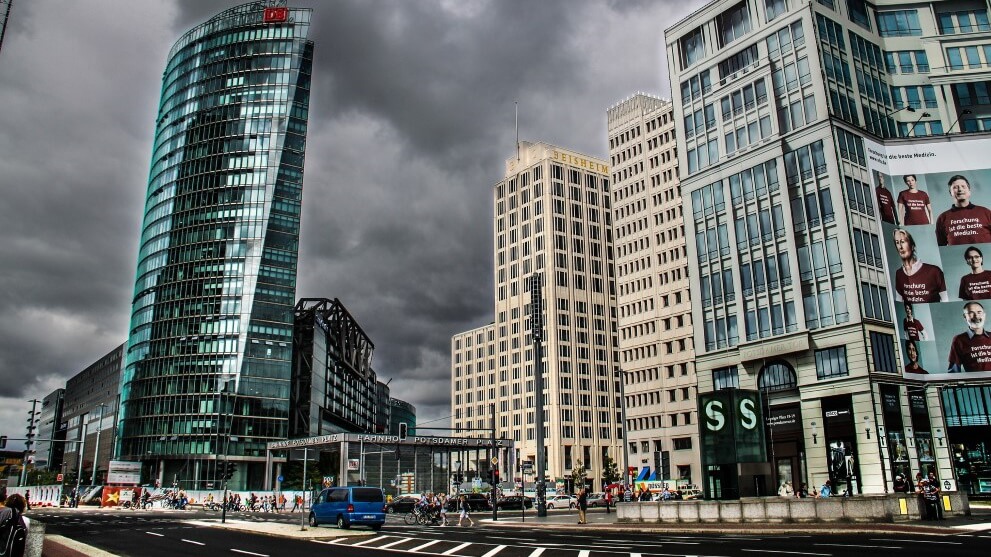
Cultural Forum at Potsdamer Platz
The Kulturforum at Potsdamer Platz is home to a wide range of cultural institutions and has become a central venue for concerts and exhibitions.
The new Philharmonie building, the Museum of Musical Instruments, the New National Gallery, the Museum of Decorative Arts and the New State Library are all located there.
Technikmuseum
The museum was founded in 1982 and opened a year later on the 25,000 square metre site of a former factory. The exhibition brings together more than 100 technical collections from the Transport and Construction Museum, the Imperial Postal Museum and the Museum of Oceanography.
The exhibition focuses on German waterway and rail transport, as well as the typical German beer and jewellery production. The Museum of Technology was completed in 2000 with a new building for aviation and shipping exhibits and is now one of the largest comparable collections in the world.
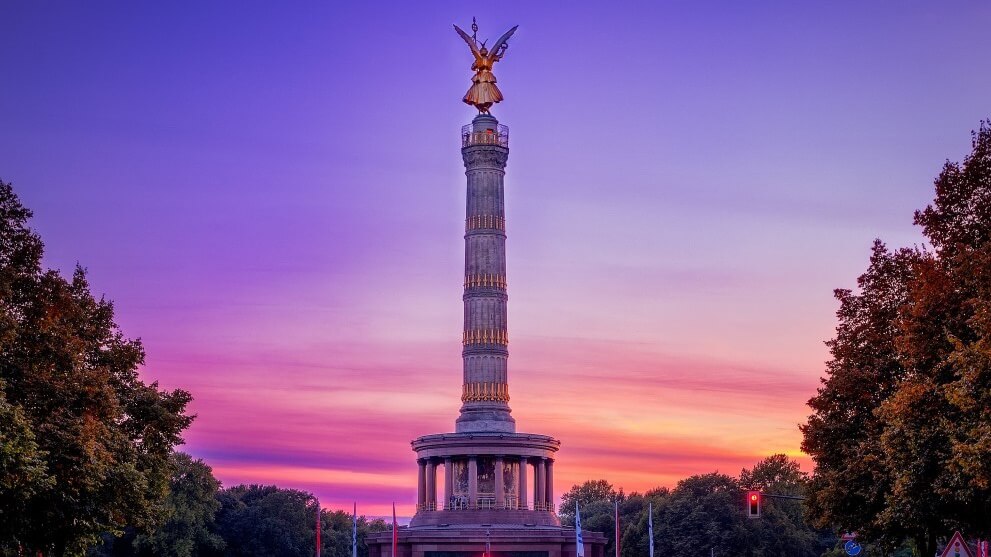
Siegessäule
The Berlin Victory Column stands in the centre of Berlin's large Tiergarten park. The Victory Column is unmistakably recognisable by the bronze figure of "Victoria", the winged goddess of victory. She looks down on the city from the top pedestal of the Victory Column.
If you also want to enjoy the sweeping view, you should be good on your feet: without a lift, 285 steps lead up to the viewing platform of the Victory Column. The view from a height of around 60 metres is definitely worth it.
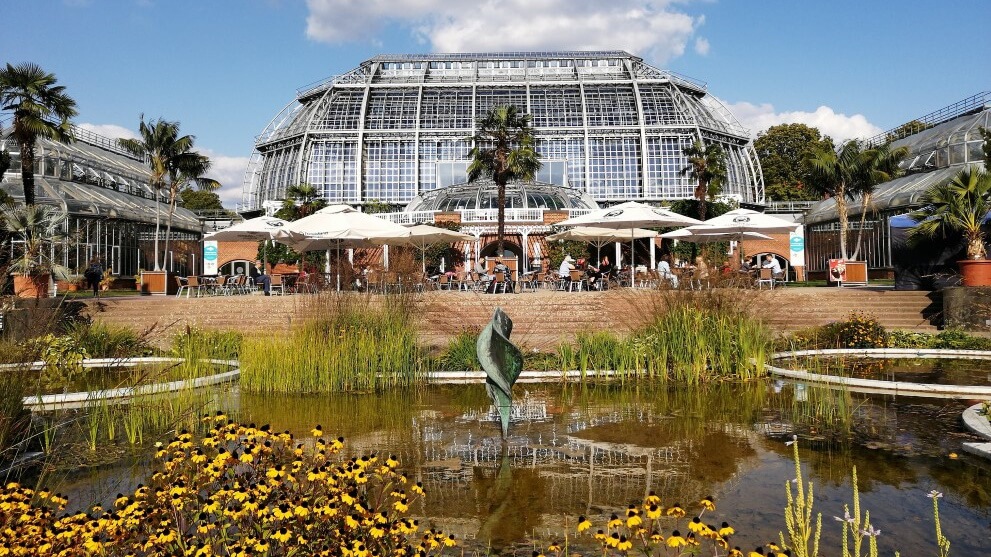
Botanical Garden
The botanical garden covers an area of 43 hectares and, with around 22,000 different plant species, is not only by far the largest botanical garden in Germany, but also one of the most important in the world. The botanical museum is also directly connected to the garden.
There is plenty to discover, both in the open-air garden itself and in one of the 15 show greenhouses and the large tropical house.